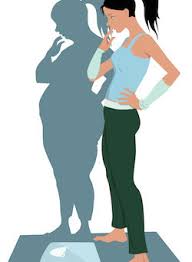
Dissatisfaction with the body is a negative mental evaluation of the body; Because it depends on body size, weight, and fitness. Dissatisfaction with the body is considered an important negative impact factor related to body image. Typically, dissatisfaction involves the perceived difference between one's current body and one's ideal body, which fosters negative feelings and dissatisfaction. Dissatisfaction with the body is considered the norm and has been the subject of research in recent decades. The increase in popularity is partly due to the growing prevalence around the world as well as its consequences in creating a wide range of maladaptive behaviors and emotions.
Body dissatisfaction, exercise, and physical activity
In general, dissatisfaction with the body can act as a stimulant and deterrent to exercise and physical activity. Several researchers have suggested that participating in exercise and sports can serve as a protective function against body dissatisfaction. Physical activity can also improve adults' perceptions of the body by increasing the perception of body dominance and refocusing attention on health, fitness, and body function, and away from worries about appearance. However, the relationship between body dissatisfaction and physical activity varies according to sporting and cultural conditions.
Dissatisfaction with the body is a serious problem
Body image is one of the most important topics for young people. Body image issues have increased around the world over the past 30 years and affect not only young people but people of all ages. People who experience body dissatisfaction can tend to change their body shape, which can lead to unhealthy actions with food and exercise. These methods usually do not achieve the desired result (physically or mentally) and can lead to feelings of hopelessness, shame, and guilt, and ultimately increase the risk of eating disorders.
Causes of dissatisfaction with the body
When a person has negative thoughts and feelings about their body, dissatisfaction with the body may occur. Body dissatisfaction is an internal process but can be influenced by several external factors. For example, family, friends, acquaintances, teachers, and the media all influence how a person sees and feels about themselves and their appearance. People who are in an appearance-oriented environment or people who receive negative feedback about their appearance are at risk for increased body dissatisfaction.
One of the most common external factors in body dissatisfaction is the media and, more recently, social media. People of all ages are bombarded with television, magazines, the Internet, and advertisements. These images often promote unrealistic, unattainable, and highly subtle visual ideas created by stylists, art teams, and digital manipulators that are not accessible in real life. Those who feel that they do not measure in comparison to these images can experience severe dissatisfaction with the body that harms their mental and physical health.
While some aspects of your appearance may change, others, such as height, muscle composition, and bone structure, are genetically fixed. Challenging beauty ideals and learning to accept body shape is a fundamental step towards a positive body image.
While changing your true appearance may not have a positive effect, improving your body image is a constructive goal. We have the power to change the way we look at, feel and think about our bodies.




